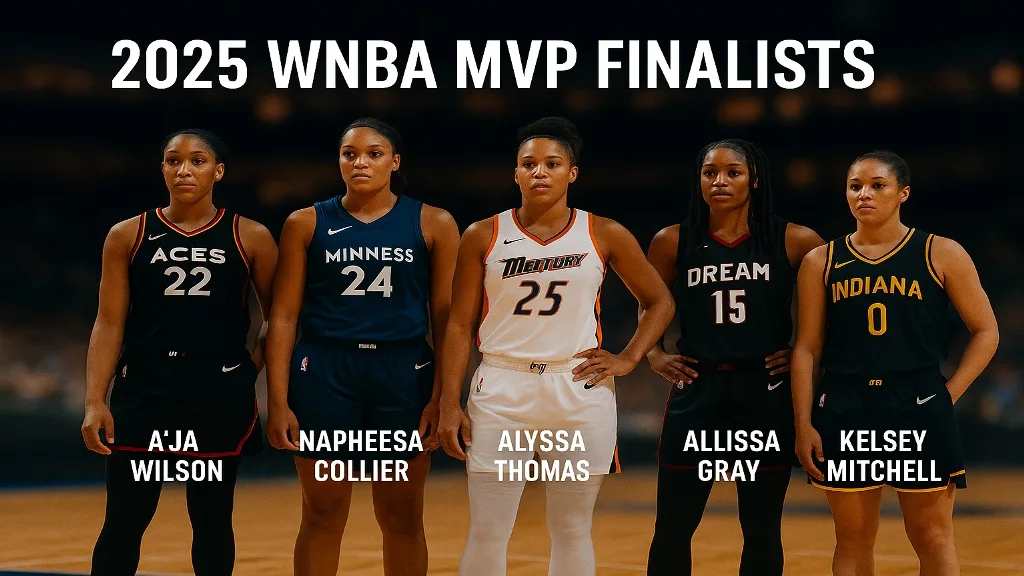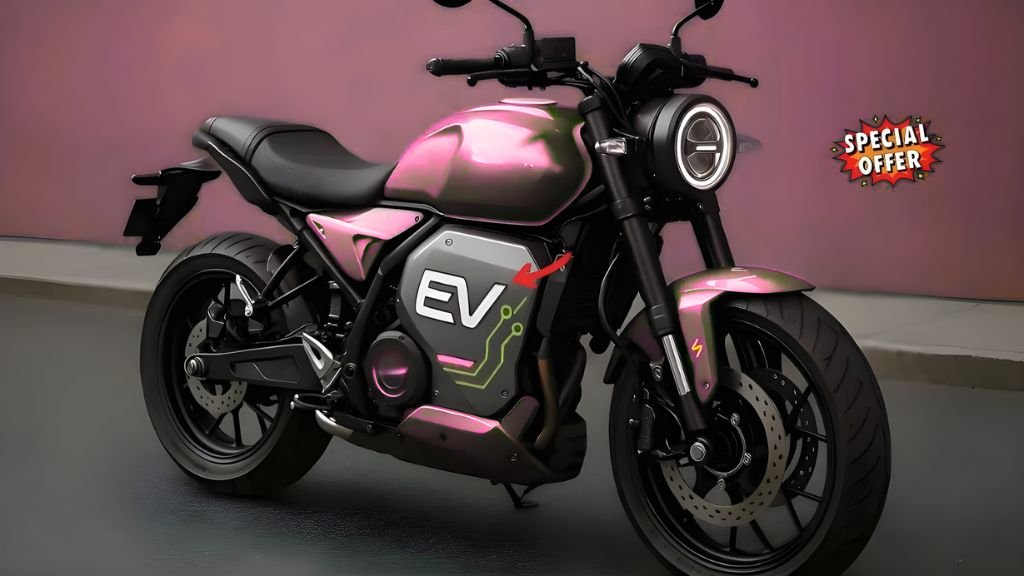WNBA MVP Finalists 2025: MVP day always feels bigger than a trophy. It’s the sport pausing to argue about value, leadership, and how we measure greatness in a league where stars carry enormous responsibility. The 2025 WNBA MVP finalists list—A’ja Wilson, Napheesa Collier, Alyssa Thomas, Allisha Gray, and Kelsey Mitchell—gave us five clean storylines and one messy, wonderful debate.
The conversation swept through practice gyms and living rooms alike because each candidate represented a different blueprint for winning. That is the heartbeat of the WNBA right now: versatility, responsibility, and a nightly sense that anything can happen.
| Snapshot | Detail |
|---|---|
| Award | WNBA Most Valuable Player (MVP) 2025 |
| Finalists | A’ja Wilson (Aces), Napheesa Collier (Lynx), Alyssa Thomas (Mercury), Allisha Gray (Dream), Kelsey Mitchell (Fever) |
| What’s at stake | Individual glory, franchise momentum, and the narrative that shapes the postseason |
| Why fans care | A tightly packed race with contrasting styles, historic numbers, and coast-to-coast buzz |
The five cases, told in plain basketball
A’ja Wilson: the standard-setter
Some seasons feel inevitable in the best way. Wilson’s did. When the Aces needed a stop, she owned the paint. When they needed a bucket, she lived at the nail, punished switches, and stretched defenses just enough to make coaching plans crumble. The combination of elite rim protection and go-to scoring doesn’t show up together very often. That duality made every Aces run feel like a proof of concept for her MVP credentials. The stat lines were loud, but the control was louder.
Napheesa Collier: the two-way conductor
Collier’s case was about completeness. She toggled between power and finesse without blinking—face-ups from the elbow, post seals on smaller defenders, baseline cuts when the ball moved away, and those timely help rotations that end possessions. Minnesota’s rhythm mirrored her touches. When Collier dictated tempo, the Lynx looked like a team that could bully anyone for four quarters. The argument in her favor never relied on one number. It leaned on the dozen small things she did every night that made teammates better.
Alyssa Thomas: the game bender
If basketball had gravity meters, Thomas would short them out. She sees the floor two beats ahead, and she imposes a pace that suits her team. Sometimes that looked like head-down drives through traffic; sometimes it was a skip pass that punished a lazy tag. You watched a Mercury game this year and felt Thomas shaping it, even on empty possessions. MVP conversations need that kind of imprint, and she supplied it from May to the final week.
Allisha Gray: the two-way wing every contender wants
For Atlanta, Gray turned hard games into winnable ones. She guarded the opponent’s best perimeter player, then walked down to the other end and hit the shot that quieted a crowd. Her mid-range was calm, her three stayed honest, and her late-clock decisions felt veteran-sure. The Dream took on her personality—tough, clean, and ready for a final-minute scrap.
Kelsey Mitchell: pace, poise, and daggers
Mitchell’s season was a masterclass in pressure creation. She put defenses in rotation with a single dribble, climbed into pull-ups that would be bad shots for most guards, and lived in the late-game moments that swing playoff seeds. Indiana’s identity changed because her confidence changed the math. That is what MVP conversations reward: players who bend scouting reports and still get where they want.
Why these five and what that says about the league
The WNBA keeps proving that there isn’t one way to be valuable. This finalists list delivered five different answers to the same question. A dominant big who controls both rims. A versatile forward who can be a first option and a safety valve. A point-forward who turns structure into flow. A wing who closes space on defense and clocks the loudest shots on offense. A guard who manufactures clean looks against set defenses. That variety is why the league’s audience keeps growing: every team can talk itself into a path, and every fan can see a version of the game they love.
This is also a season that rewarded durability and ownership. None of the finalists floated. They embraced double-teams, took the toughest covers, and kept their teams on script through injuries and schedule crunches. Value isn’t just what you do—it’s how often you do it and how much chaos you can absorb while staying yourself. By that measure, all five sat comfortably in MVP territory.
Eyeballs, emotion, and the MVP theater
The conversation around the WNBA MVP finalists didn’t just live on highlight reels. It lived in the connective tissue of games: fourth-quarter possessions, timeout huddles, the quiet handoffs that keep a possession alive. Fans noticed because the league’s pacing and parity made every night feel consequential. When an award is this close, you start counting the almosts and the maybes. Did a single defensive rotation in June cost someone two first-place votes in September? That is the delicious tension of a race like this.
Numbers without numbing the joy
If you love the spreadsheet, you had plenty to chew on. Wilson piled up double-doubles and owned the protected area. Collier’s on/off splits told you how essential she is to Minnesota’s shape. Thomas kept stacking nights with points, rebounds, and assists in the same sentence. Gray’s true-shooting stayed sturdy even when she took the tough looks that come with being The Option. Mitchell put up a clutch profile that refused to regress. But numbers only sing when the tape agrees. This year, the tape sang along.
Coaching lenses: how the finalists change game plans
A coach facing Wilson starts with survival. Show two to the ball? She reads it. Play her single coverage? She lives at the line and erases your drives. Against Collier, you choose your poison: switch and risk the glass, or show help and watch Minnesota’s cutters wake up. Thomas turns every pick-and-roll into a referendum on discipline; one late stunt and she throws a no-look to the corner. Gray punishes soft closeouts and bad footwork. Mitchell punishes hesitation. These are not just great players—they’re players who make you rewrite your whiteboard.
The human side of value
Awards can become cold if you let them. This race never did, because each finalist’s story softened the edges. Wilson has shouldered the weight of a dynasty timeline while staying joyful. Collier returned to form and then pushed past it, reminding everyone how much presence matters. Thomas carried a roster through choppy waters with stubborn optimism. Gray made Atlanta feel inevitable in close time. Mitchell gave Indiana a heartbeat fans could count. The MVP talk wrapped itself around those human beats and became bigger than voting totals.
What this means for the postseason
MVP debates don’t end when ballots lock; they evolve on the playoff stage. That’s where two-way stars win reputations and where guards write new mythologies with ten seconds left. The finalists’ teams will lean into the same qualities that got them here. Expect Aces games to hinge on defensive violence and half-court patience. Expect the Lynx to stretch opponents until something tears. Expect the Mercury to weaponize tempo and misdirection. Expect the Dream to drag you into a close one and let Gray decide it. Expect the Fever to trust Mitchell to manufacture the cleanest look in the ugliest minute. The WNBA MVP finalists conversation simply becomes the playoff conversation.
Media cadence and why it worked this year
A clear awards timeline—finalists, build-up, reveal—created a steady drumbeat that let fans follow along without losing the plot. It felt like an event because everyone knew when to tune in, what to expect, and which names to argue about. That matters for a growing league. The right cadence turns an announcement into a shared experience and converts casual curiosity into habit.
Why the phrase “WNBA MVP finalists” matters for readers and searchers
Let’s call out the obvious: you’re here because you care about the WNBA MVP finalists and you want a clean, human explanation of why these five rose to the top. Keeping that phrase present doesn’t just help people find this story; it keeps the focus squarely on the award, the race, and the stakes. The goal is clarity, not clutter—a readable guide that respects both die-hard fans and newcomers.
Bottom line
Five different routes to value, one shared destination. The 2025 WNBA MVP finalists list captured the league’s soul right now: stars doing everything, teams trusting them to do it, and a fan base that shows up every night to watch conversation become canon. However the trophy sits in history, this race already gave us something better—ninety-four feet of proof that the league is deeper, smarter, tougher, and more watchable than ever.
Frequently Asked Questions
Who are the WNBA MVP finalists for 2025?
A’ja Wilson, Napheesa Collier, Alyssa Thomas, Allisha Gray, and Kelsey Mitchell. The five reflect five distinct paths to value—dominant interior play, two-way versatility, point-forward orchestration, two-way wing shot-making, and clutch guard creation.
Why is this group significant?
Because it proves there is no single MVP mold. The WNBA MVP finalists showcase how different skill sets can anchor a franchise and how modern basketball rewards adaptability as much as production.
What separated the top candidates in the race?
Consistency against elite opponents, fourth-quarter control, and the ability to carry both scoring and defensive responsibility without sacrificing efficiency. The best cases blended box-score heft with on-court organization.
How does team success factor into MVP voting?
Team success is context, not a rule. When two players offer similar production, voters often favor the one driving a higher seed. The WNBA MVP finalists list reflected both team results and individual dominance.
What will this conversation mean for the playoffs and beyond?
It sets expectations. Opponents will shape game plans around these five, broadcasters will frame series through their impact, and front offices will read the ballots as a guide to building around star strengths. The WNBA MVP finalists discussion is now the playoff lens.







